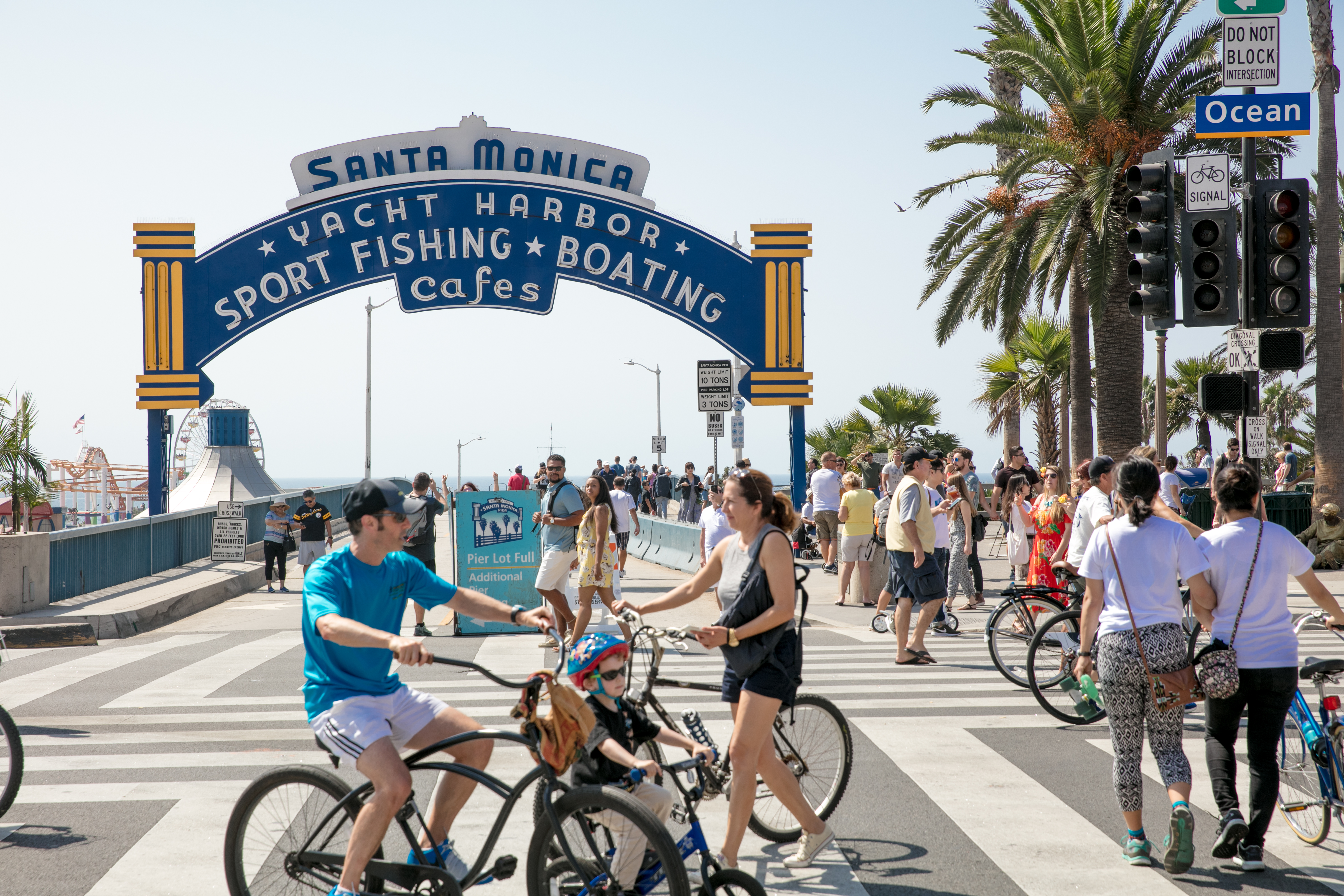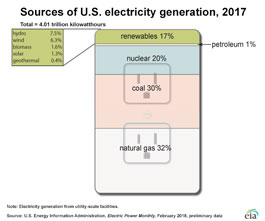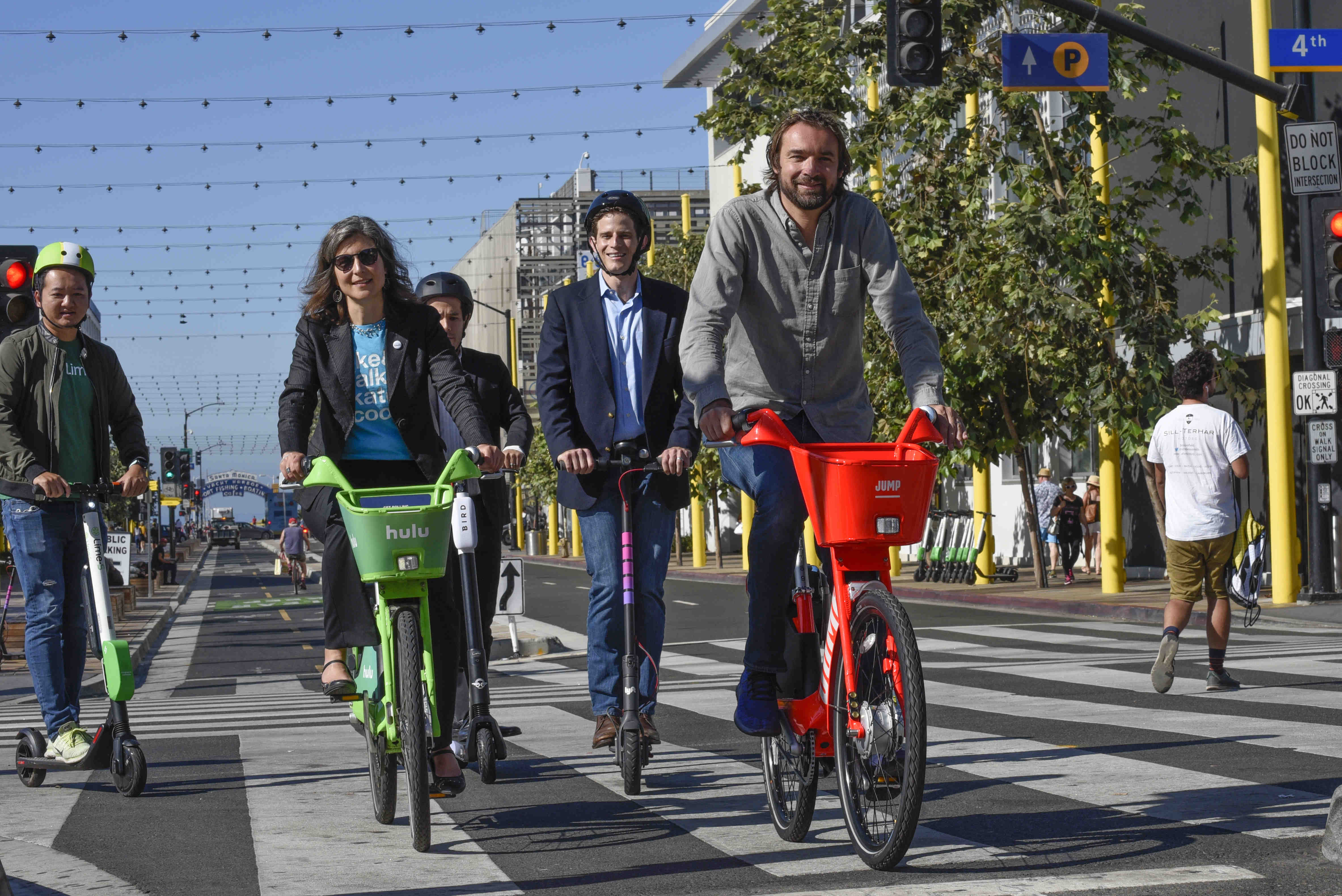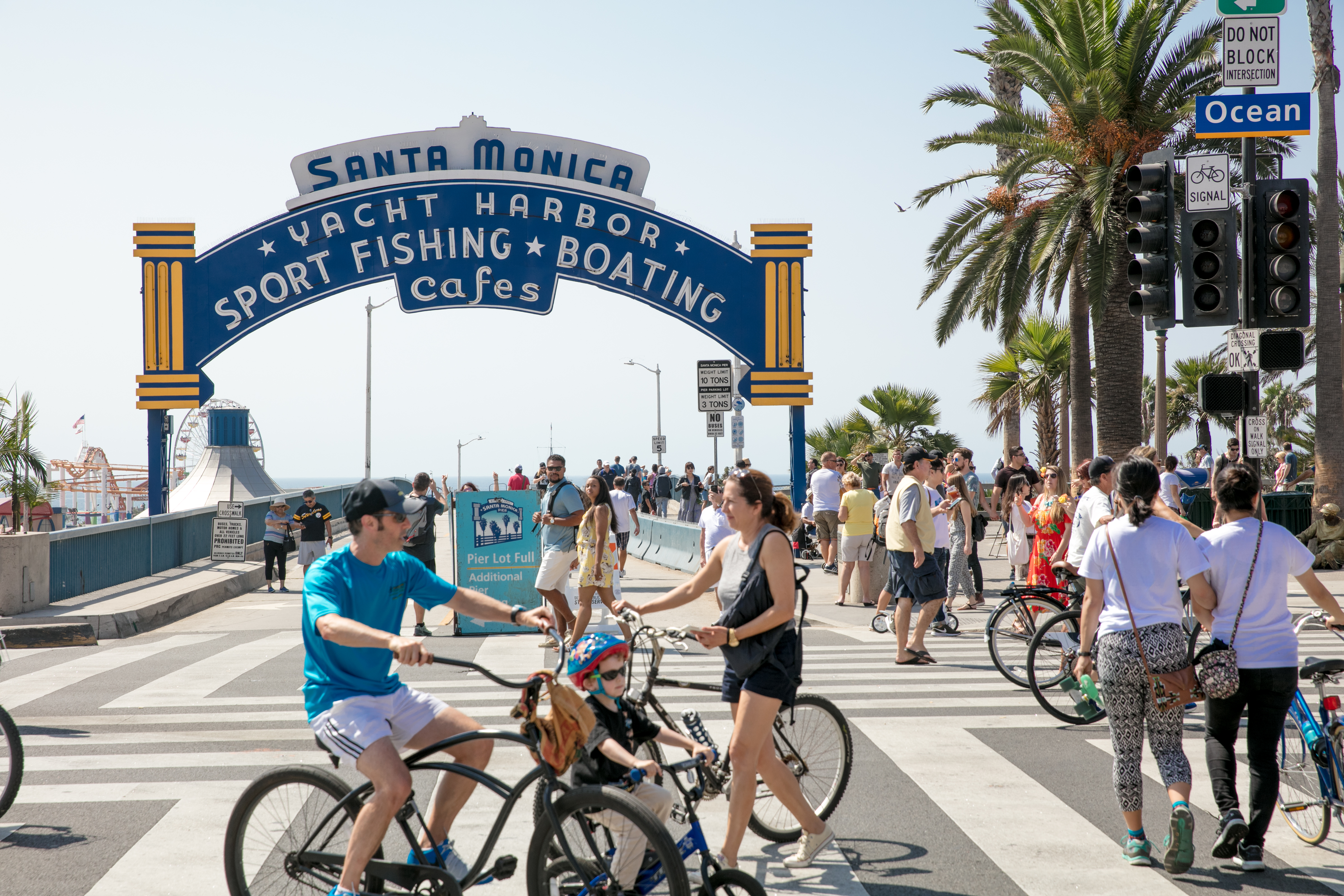
Santa Monica, California USA is leading the world in sustainable urban solutions, many of which are being borrowed by other enterprising mayors. Below are just a few of the sustainable initiatives of this beautiful beach city, which just became 100% powered by renewable energy and has a goal of reducing single-occupancy vehicle usage and making public transportation and micro-mobility the norm.
Santa Monica Green
- 100% Renewable Energy
- Public Transportation and Micro Mobility.
- Water Conservation
- Compostable Food Waste Collection
- Plastic Ban
- Organic Food
And here are the details on each of these sustainable initiatives.
Santa Monica Green
- 100% Renewable Energy. In February of this year, Santa Monica will go to 100% renewable energy for their electrical grid. Denizens may opt out of 100%, and choose 50% or 36% renewable. By comparison, almost 2/3rds of the U.S. grid (63%) is still powered by fossil fuels.

- Public Transportation and Micro Mobility. The city has been on the fast track to get people out of single-occupancy vehicle use and into public transportation. The new Expo Line connects the beach town to downtown and neighboring communities, and is a very popular alternative to the gridlock traffic that still traps Los Angeles commuters. The micro mobility options, including bike-share and scooter-share apps, solve the problem of the last mile between the train and your destination.

- Water Conservation. Santa Monica has had an urban runoff recycling facility (S.M.U.R.R.F.) since 2007. Their conservation plan pays residents to give up grass (in a Cash for Grass rebate) and to harvest rain (another way to get cash back). New builds must be water neutral. The City’s Sustainable Water Infrastructure Project (SWIP) is designed to reduce Santa Monica’s reliance on the Metropolitan Water District to 1% by desalinating brackish water, harvesting rainwater and recycling run-off and waste water.
- Compostable Food Waste Collection. Over 20% of municipal trash is food waste (source: EPA). Santa Monica makes it easy to compost your food waste in the green bin, along with your yard clippings (so you don’t have to be a backyard composter.) Over 40% of the food Americans buy is wasted (source: NRDC), so getting smart about your purchases can help your wallet, and our planet, too.
- Plastic Ban. Santa Monica banned polystyrene take-out containers in 2007 and plastic bags in 2011. In 2018, the Santa Monica City Council revised the 2007 Nonrecyclable Plastic Food Service Container Ordinance to include a plastic ban on straws, lids, utensils, plates, bowls, trays, containers, stirrers, cups, and lid plugs. These products are now required to be marine biodegradable. Reusable is the best option (encouraged).
- Organic Food. There are Farmer’s Markets all over Santa Monica, at least 3 times per week. In addition to making organic, local food available, the City has taken means to ensure that Cal-Fresh recipients are helped to get access to benefits, and receive a voucher for use at the Farmer’s Markets. All of the vendors accept EBT cards. Mayor Winterer believes that organic farming is an essential part of sustainability, alongside renewable energy and compact, pedestrian-friendly neighborhoods. He says, “Current farming practices are not sustainable and they generate a lot of carbon. Organic processes sequester carbon back into the soil and preserve the topsoil so that we don’t get Dust Bowls. It’s important to encourage people to use organic produce.”
Greening a city, or changes of any kind really, is not an easy task. As former Mayor Ted Winterer acknowledges, “Some people in any community don’t like change.” He encourages leaders to be visionary, saying, “Don’t be afraid to be bold. You’ll always meet some resistance on change.”

The landing of the e-scooter in 2017 was one of those challenges that Mayor Winterer faced. Bird e-scooters were launched in Santa Monica, California by Bird Chief Executive Travis VanderZanden, a former Lyft and Uber executive, who relocated to Santa Monica, California from the Bay Area. There was much pushback from car drivers and residents who were alarmed at seeing tourists, teens and Millennials riding Birds on sidewalks, without helmets and then just leaving them wherever they wish. (Convenience is one of the great appeals of the scooter app.) Mayor Winterer admits that city officials were freaked out and caught without warning.
Under the leadership of Mayor Winterer, however, a pilot program was established which allowed the city to paint and enlarge bicycle paths and install scooter parking areas. Santa Monica’s city manager Rick Cole confided that Mayor Winterer was the champion of the program, which under different leadership might never have gotten off the ground.
Since the launch of Santa Monica’s e-Scooter Pilot Program, other cities, including San Francisco, have adopted similar tests. Ford Motor Company purchased Spin on Nov. 8, 2018 for a reported $100 million (Tech Crunch). Bird has been valued at north of $2 billion. There is a lot of competition in the e-scooter space these days, with Lyft, Uber and many others jumping on the unicorn startup concept. Bird is available in cities all over the world, including Paris and London, and at 29 universities in the U.S. – all of this in just two years!
One of the things that I found most refreshing during my interview with Mayor Winterer (on November 29, 2018) is that he bikes the talk. There are five bikes and only one car in his family of four. He hasn’t tried a scooter yet, but is keen to try the Jump (Uber-owned) electric bikes. Mayor Winterer told me that not owning a car (which costs on average $7,500/year, including insurance, gasoline and car payment) can really help the budget. According to Mayor Winterer, “In 2017, between my wife and I, we spent a little over $2000 on Uber and Lyft. That is so much less than the cost of owning a car. Sometimes the situation comes up when you can’t walk or ride a bike.”
There are still many challenges in this 8.3 square mile seaside city by the Pacific Ocean, including homelessness, unaffordable housing and traffic jams during rush hour. The pathway to green, to access, to fairness, to kindness, to clean air and protecting the ocean that so many residents and visitors enjoy is not easy. However, with leaders like Mayor Winterer, the city is moving forward to ensure that this beautiful community will be here to enjoy, with fresh water, air and healthy food, for generations to come.


